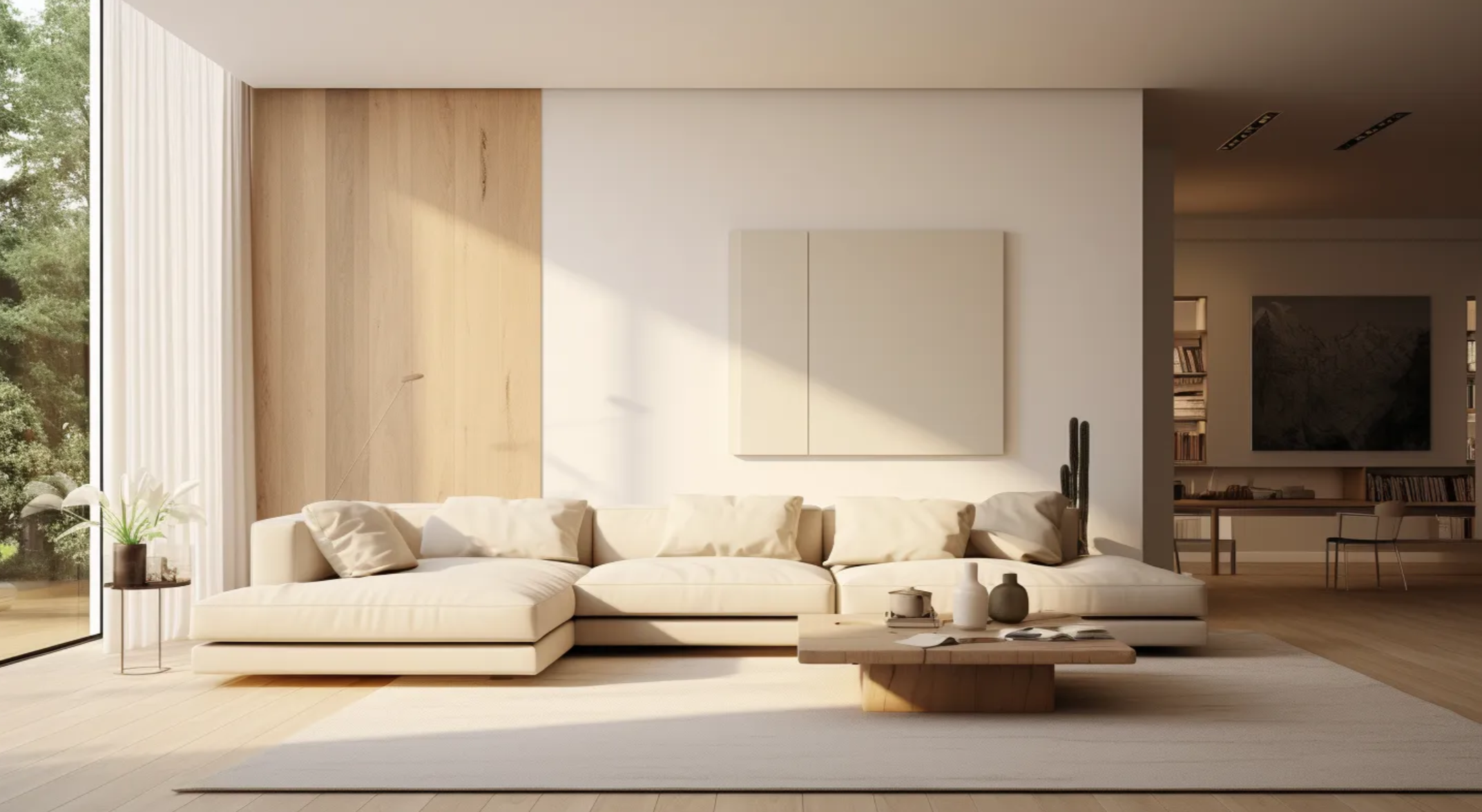We’re exploring the captivating world of minimalist design. This style isn’t just about the absence of clutter; it’s a philosophy of appreciating beauty in simplicity and functionality. Let’s delve into 10 fundamental principles of minimalist design and how to seamlessly integrate them into your living space.
1. Clutter-Free Zone: Minimalism lives by ‘less is more’. Begin by decluttering and keeping only essential and meaningful items, creating a carefully curated space.

2. Quality Over Quantity: Focus on a few high-quality pieces over a multitude of items. Choose durable, well-made furniture that adds a touch of sophistication.
3. Neutral Color Palette: Stick to neutral colors to create a tranquil and unified look. These shades lend an open, airy feel to your space.

4. Functionality is Key: In minimalist design, every item should serve a purpose. This practicality ensures a manageable and uncluttered environment.
5. Open Space and Airy Feel: Embrace open spaces. Less clutter means more room for your items to breathe, enhancing the peaceful ambiance.

6. Texture and Subtle Patterns: Use textures and patterns to add depth. A knitted throw or patterned cushions can add warmth without overwhelming the space.
7. Streamlined Shapes and Clean Lines: Opt for furniture with streamlined shapes and clean lines to maintain order and reduce visual chaos.

8. Natural Light: Maximize natural light to make the space feel larger and more welcoming. Allow as much light in as possible for a brighter feel.
9. Art and Accent Pieces: Select art and accents deliberately. A large, statement piece can be more impactful than several smaller items in a minimalist space.
10. Personal Touch: Add your personal touch. Minimalist design can still reflect your personality, whether through a cherished item or a unique piece that brings you joy.
By embracing these principles, you can transform your living space into a minimalist oasis that is not just aesthetically pleasing but also mentally soothing. Remember, minimalism is more than a design choice; it’s a lifestyle that values simplicity and intentionality.
Further reading:
- “Minimalist Design | Everything You Need to Know” by Minimalism Co: This comprehensive guide covers the essentials of minimalist design, its benefits, and practical tips on how to incorporate minimalist principles into various aspects of living and working spaces. – Link
- “6 Guidelines: How to Design Like a Minimalist” on CreativeLive Blog: This article provides guidelines on minimalist design, focusing on function, visual hierarchy, use of space, proportion, color, and typography. It offers insights into how minimalism can be applied in different design areas including web and app design, graphic design, interior design, and architecture. – Link
- “Minimalist Interiors: Creating Serenity Through Simplicity” on Planner5D: This post explores the essence of minimalist design, its history, and how it has evolved. It discusses key elements like color palettes, natural materials, space management, and the benefits of adopting minimalist principles in everyday living. – Link
